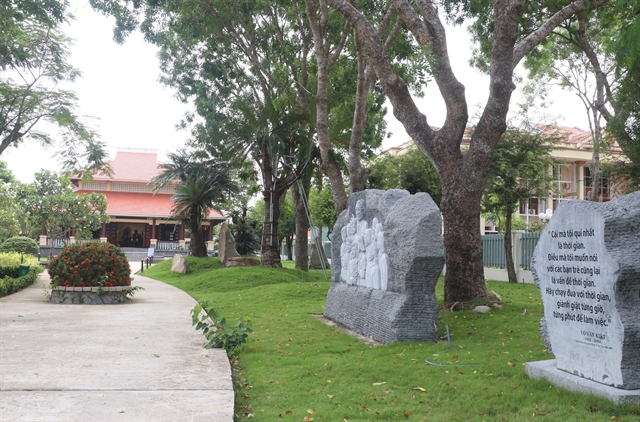
VĨNH LONG – The Cửu Long (Mekong) Delta province of Vĩnh Long is expanding investment in tourism products, infrastructure and others aiming to develop tourism into a key economic sector by 2025.
Located between the Tiền and Hậu rivers, two tributaries of the Mekong, in the delta’s central area, the province has the wherewithal to develop eco-tourism products related to rivers, orchards, handicraft villages and rural areas.
Besides rural landscapes, it also has 11 national heritage sites and 54 provincial heritage sites, many of them popular tourism destinations.
Its popular historic, cultural and spiritual tourism destinations include the Văn Thánh Temple and Tiên Châu Pagoda.
The province has solicited investment of VNĐ6.5 trillion (US$284 million) in seven tourism projects including Mang Thít Contemporary Heritage, a museum of the Mekong Delta’s agriculture, Giông island and Chim island resorts, and An Bình eco-agriculture urban area.
Mang Thít seeks to preserve the baked brick village in the namesake district, the province’s largest brick producer.
Vĩnh Long is well known as the largest brick producer in the delta with thousands of kilns producing baked clay bricks along rivers and canals. The traditional craft has been developed for more than 100 years and attracts a large number of tourists each year.
Nguyễn Thị Quyên Thanh, deputy chairwoman of the province People’s Committee, said the tourism industry and Department of Culture, Sports and Tourism should speed up implementation of policies, projects and plans for developing tourism.
Relevant agencies and localities should develop sustainable night, green and experimental tourism products, she said.
She also called on them to strengthen advocacy activities to promote tourism, digitise tourism activities and help companies promote their tourism services.
The province has 132 places of accommodation for tourists, eight travel companies and eight tourism zones, according to the department.
In 2015 -19, the number of tourists visiting the province grew at an average of 11.6 per cent a year.
But with the onset of COVID - 19, the number of tourists declined dramatically in 2020 – 21 to only around a million.
Recovering efforts
The province has taken various measures to revive the tourism industry post-COVID.
Last month it held the second Vĩnh Long Tourism Festival in Vĩnh Long City, attracting more than 14,000 visitors to the three – day event.
Phan Văn Giàu, director of the department, said: “The event helped promote tourism, specifically identified products and one commune – one product (OCOP) products in the delta’s eastern region.”
The event has also helped travel companies and OCOP producers in the eastern region study demand from customers and improve the quality of their products and develop new ones, he said.
It also increased linkages between travel companies and tourism services providers in the delta’s east, in Hậu Giang Province and Cần Thơ City in the west and HCM City, he said.
In 2021 - 25, Vĩnh Long plans to link handicraft villages, individuals, establishments, and companies that produce OCOP products with tourism sites in and outside the province to improve the value of OCOP and handicraft products and promote tourism.
The province People’s Committee is implementing a project to develop four specifically identified products, with homestay tourism being the key one and agricultural, handicraft village and cultural tourism being the others.
The province targets annual average growth in the number of tourist arrivals by 9 per cent in 2021 – 25 and 10 per cent in 2026 – 30.
To achieve them, it has plans to invest in infrastructure for land and waterway transport, build new – style rural areas, develop new tourism sites, and upgrade existing ones.
It is also encouraging investment in eco-tourism, shopping and food tourism. – VNS
Xem thêm: lmth.rotces-yek-otni-msiruot-poleved-ot-gnol-hniv/0288811/ymonoce/nv.swenmanteiv